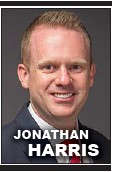Jonathan Harris
Businesses across the country are reeling as they face year-over-year inflation rates that haven’t been seen since the 1970s and 1980s. As price uncertainty continues to disrupt business operations, forward-thinking employers are already gearing up to face an unfavorable renewal cycle for their employer-sponsored health plans in 2023.{mprestriction ids="1,3"} Thought leaders nationwide grapple with questions like “How high can current inflation push up health insurance costs?” and “What can we do to manage expected premium increases?”
Projected Medical and Pharmacy Trend 2023
According to the study “An Early Look at What Is Driving Health Costs in 2023 ACA Markets” published by analysts at The Peterson Center on Healthcare and KFF, health insurance premium increases for the Affordable Care Act (ACA) individual marketplace are expected to rise by a median of 10 percent. This marketplace is small relative to the Medicare, Medicaid and employer-sponsored health plan markets. However, this expected 10 percent increase can hint at possible increases for employers across the country.
Certain markets have not seen double-digit increases for several years now, due, in part, to a drop in utilization from the COVID-19 pandemic. In the waning months of the pandemic, utilization has rebounded. Utilization is a major factor in projecting medical costs in upcoming months. Consequently, many fear that a market correction is imminent. Rising labor and supply costs for the healthcare industry will only add to any market correction. Several thought leaders are projecting a median increase for employer-sponsored health plans of 7 percent to 9 percent in 2023.
What Can Be Done?
The common paradigm of health insurance is that of an ambulance at the bottom of a cliff, poised to take care of individuals after issues arise. The flawed, foundational assumption with this paradigm is that nothing can be done about managing the health and financial risk among your employee population. In fact, the exact opposite is true. Employers across the country are finding exciting and innovative solutions to combat unpredictable fully insured renewals with savvy risk management practices. Partially self-funded health plans (i.e. self-funded health plans with reinsurance as a layer of protection) is the first and most vital step for managing the risk of your health plan.
Partially Self-Funded Health Plans
At this point in time, the data screams so loudly that the point is almost beyond questioning: partially self-funded health plans are superior to fully insured health plans in both quality and cost.
Data from one source indicates that 96 percent of employer groups will save money relative to their fully insured renewal. Of those employers that save money, 85 percent save over 10 percentage points on their health plan expense. Better yet, these savings do not come at the expense of slashing benefits for employees. Beyond year one, the savings magnify. Self-funded health plans are well known to trend at a much lower rate than fully insured health plans. Consequently, the savings you generate in Year 1 compound year-over-year.
Making the move to a partially self-funded health plan does not equate to a magic switch you can flip that will realize these results at your organization. Rather, the partially self-funded health plan empowers you, Mr. or Ms. Employer, to be a true risk manager of your health plan. Only with a true risk management mentality can optimal results be obtained.
If you have over 25 employees on your health plan, talk to your agent today about viewing partially self-funded options come renewal. Level-funded programs can also be successful in certain circumstances, and especially for employers with five to 25 full-time employees.
Data Transparency
Carriers have long guarded employer access to health plan data. The national average for health plan expense currently resides around $14,800 per employee per year. Think on that: You are spending almost $15,000 per employee every year and in some cases, you’re not allowed to see data that justifies that expense. The age-old maxim of “knowledge is power” holds true for health insurance. With partially self-funded health plans, you will have full access to your health plan data. With this data, employers can shop for competitive bids, implement impactful point solutions and begin to develop a “hive mentality” within your company culture for managing the cost of health insurance.
Conclusion
Knowledgeable, experienced benefits consults exist in virtually every market across the country. These agents can help set you up on a partially self-funded health plan during your upcoming renewal cycle. The benefits of accepting a more active role in managing your health plan far outweigh the cost of doing a little extra work to educate yourself. Many employers across the country are well-equipped to weather the impact of inflation on the healthcare industry, thanks to the paradigm shift that comes with self-funding.
Jonathan Harris is the assistant manager and lead broker with Goldenwest Health Insurance in Ogden.{/mprestriction}








